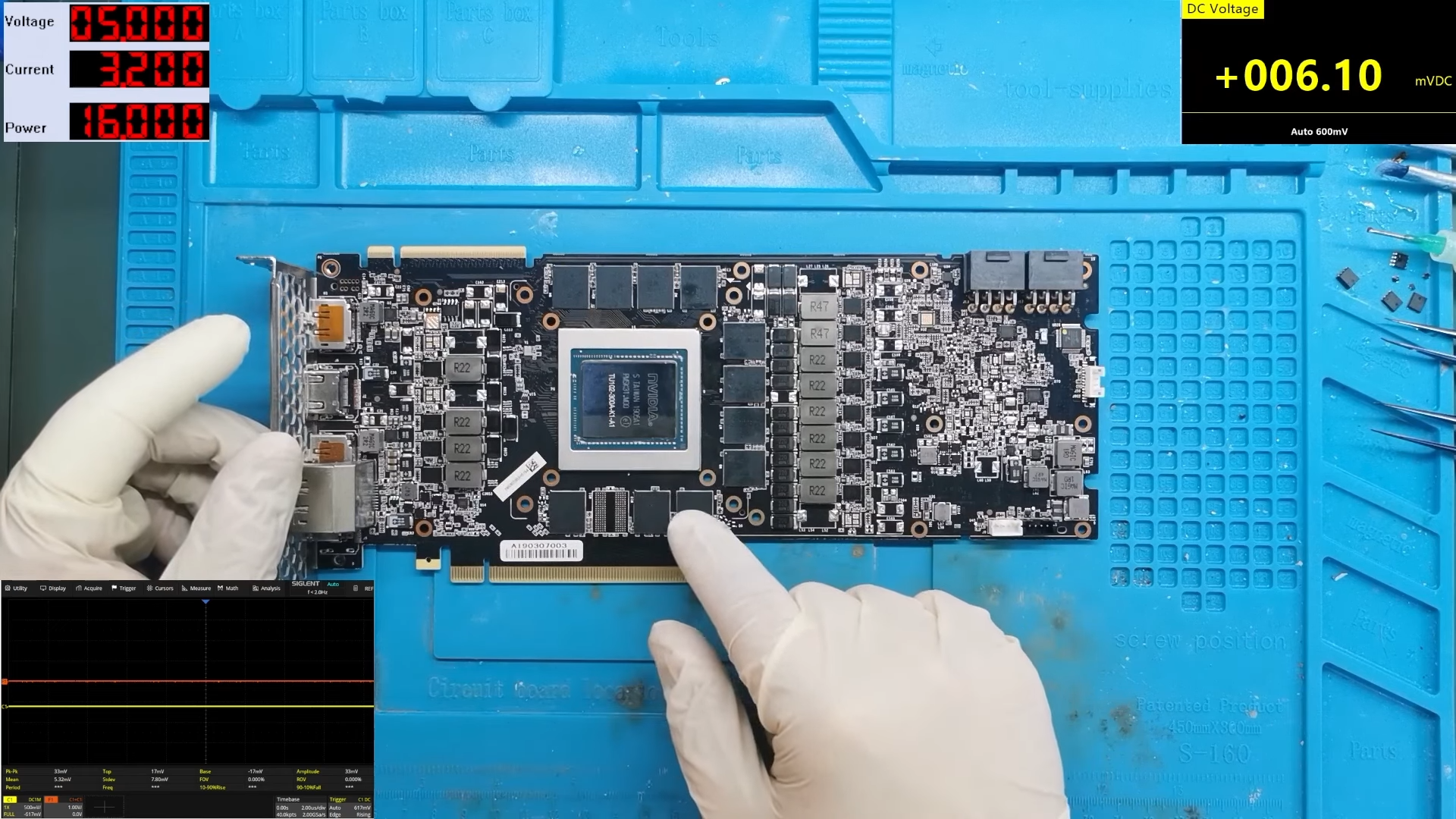
German computer repair technician KrisFix on YouTube reports that GeForce RTX 2080 Ti's — one of the best graphics cards from 2018 — commonly die late in life due to heavy stress from GPU sagging. The technician demonstrated this with a damaged RTX 2080 Ti, showing how the bottom portion of GDDR6 memory modules can lose connection with its associated solder points on the PCB after several years of use under heavy GPU sag.
If KrisFix's report is accurate, 2080 Ti's are starting to die in increasing numbers from this issue. And yes, they're potentially over four years old now, but the cards remain quite capable and many are being resold as used cards when their previous owners upgrade to something newer and faster, like the RTX 4070. Given the root cause, we could even see this issue crop up in triple slot RTX 30-series and RTX 40-series GPUs in a few years — and AMD's larger Radeon RX 6000- and 7000-series wouldn't be immune either. That could make an anti-sag bracket or vertical GPU mounting necessary to prolong GPU life.
The issue with the RTX 2080 Ti is related to the bottom portion of GDDR6 memory modules, located closest to the PCIe x16 slot. KrisFix says this area of the PCB undergoes the most amount of PCB flex from heavy GPU cooling solutions, which stresses the PCB and memory components in that area.
It's not only PCB flexing that causes the memory failure; it is a combination of GPU flex along with daily GPU use that eventually damages the GDDR6 connection points. In addition, thermal variance from daily driving the graphics card for years under heavy sag conditions causes the GDDR6 contact points to break as the flexed PCB pulls on the memory ICs in undesirable ways.
KrisFix demonstrated this perfectly with an RTX 2080 Ti in his shop that he says was failing due to the side effects of sagging. After removing the bottom three GDDR6 memory modules from the PCB, he found oxidation issues on several of the chip's contact points (BGA balls) in conjunction with failed solder joints on the PCB itself.
KrisFix was able to repair this damaged RTX 2080 Ti by successfully reballing the memory chips. However, the core issues are definitely concerning, and we could see this continue to crop up again in newer, bigger, and heavier GPUs over the next few years as they age. Just look at all the triple-slot, 1.5kg or heavier RTX 40-series and RX 7900-series cards that have come out in the past six months.
The best countermeasure to this problem is to buy an anti-sag bracket or mount your GPU vertically with a vertical GPU mount. Alternatively, and probably because the card manufacturers realized this could be a problem years ago, many enthusiast graphics cards now include a "stand" that you can place under the graphics card to reduce the strain. Asus has a short little support in some of its cards, while MSI, Colorful, Galax, Gigabyte, PNY, and others have included various other support mechanisms.
Whatever the solution, it's important to prevent the PCB from flexing and keep the card perfectly straight if you want to prolong the life expectancy of your GPU. Otherwise it could potentially lead to premature GPU death.







